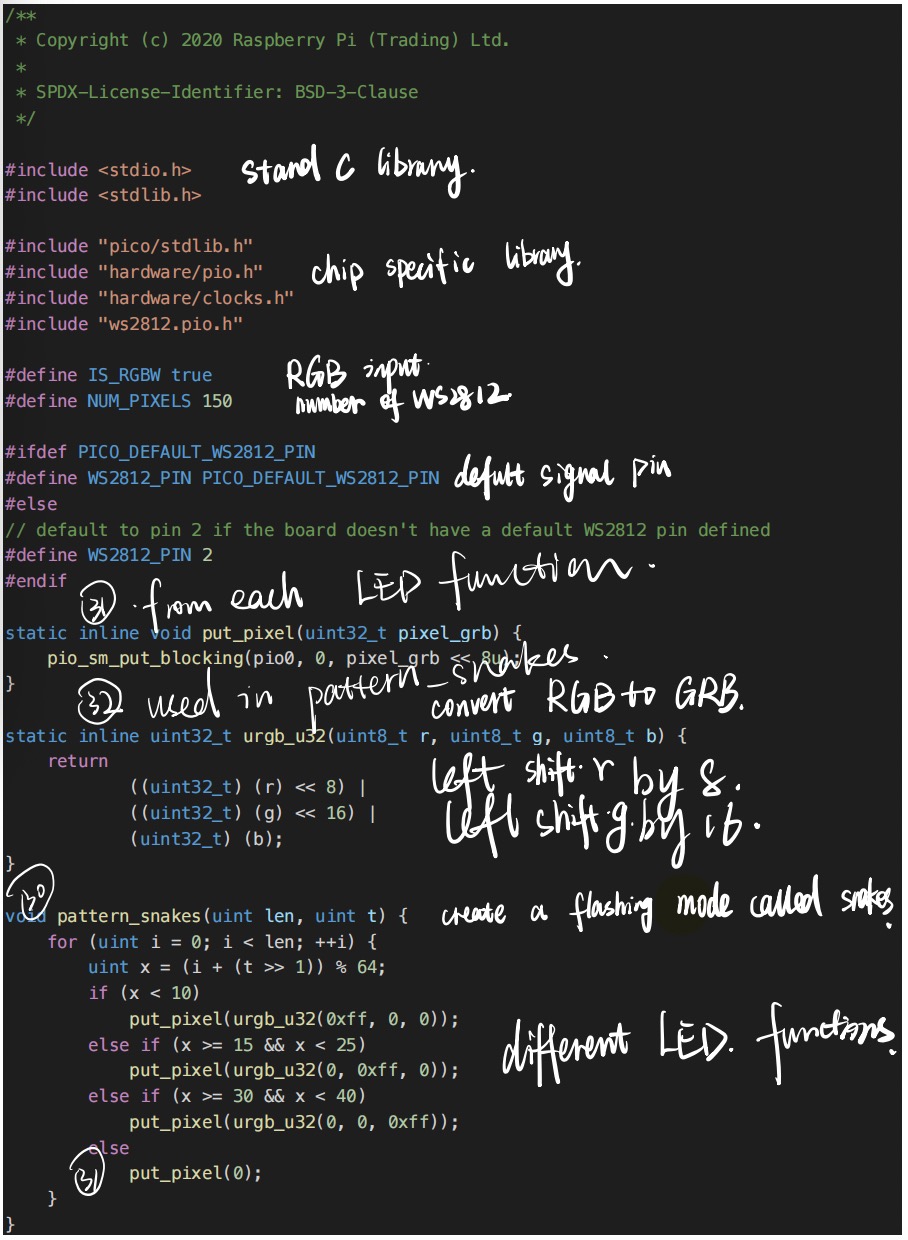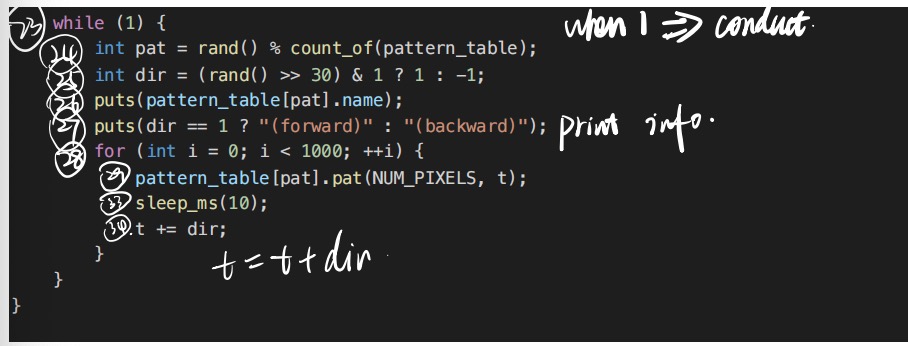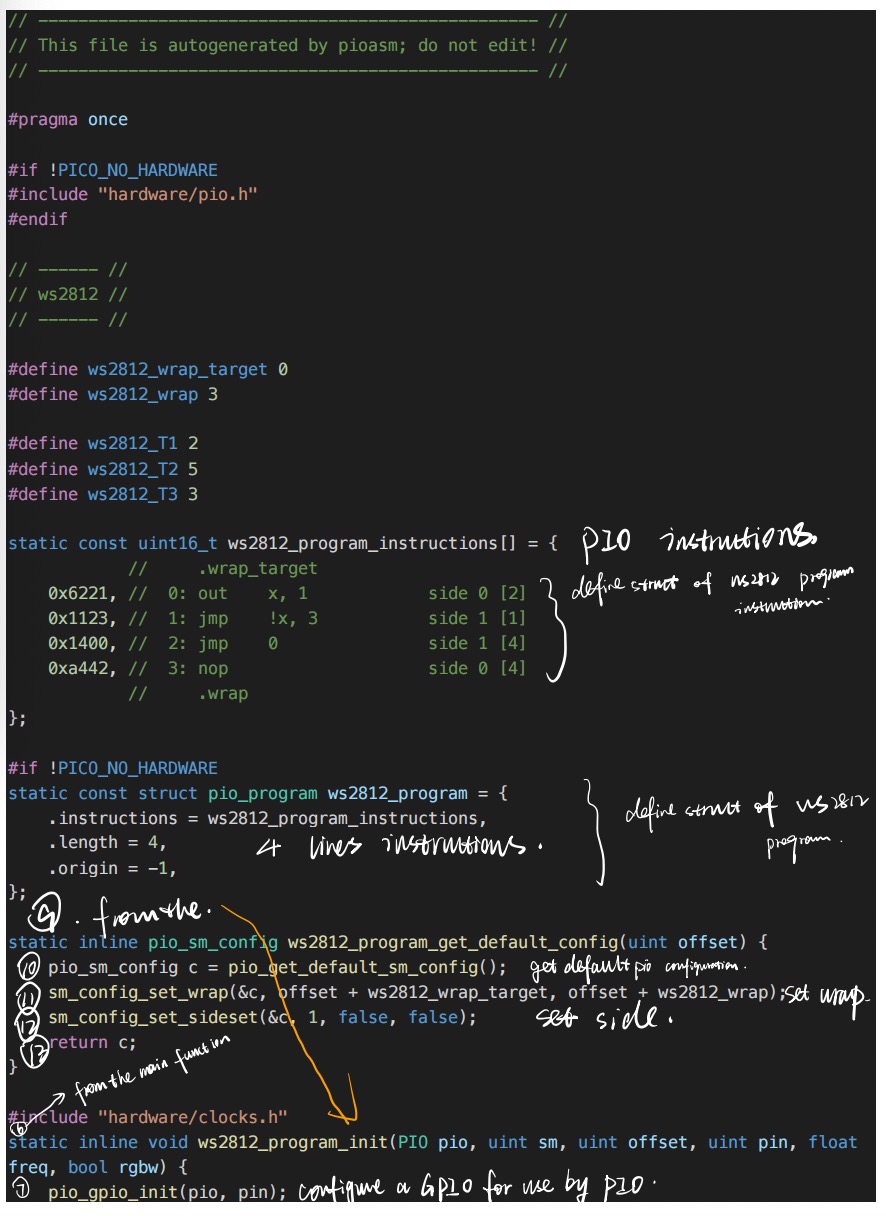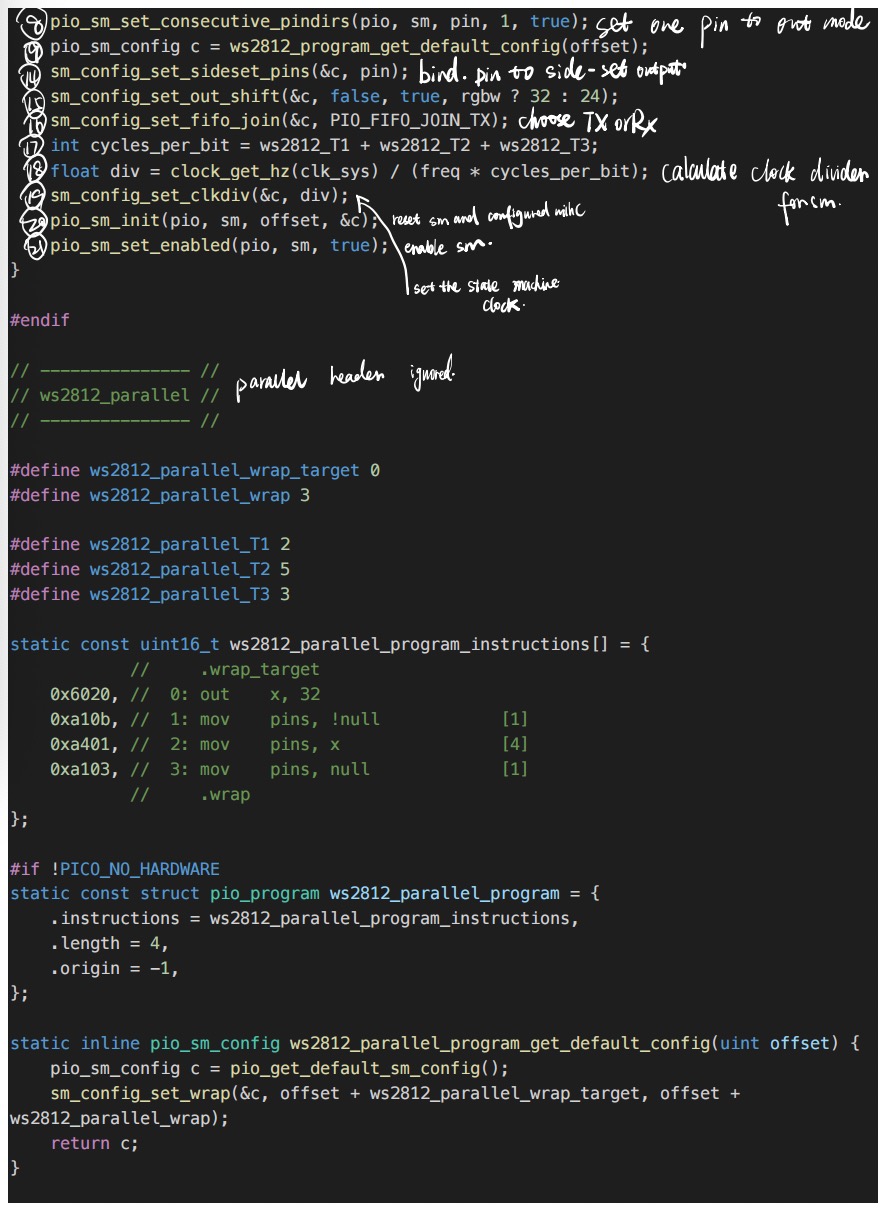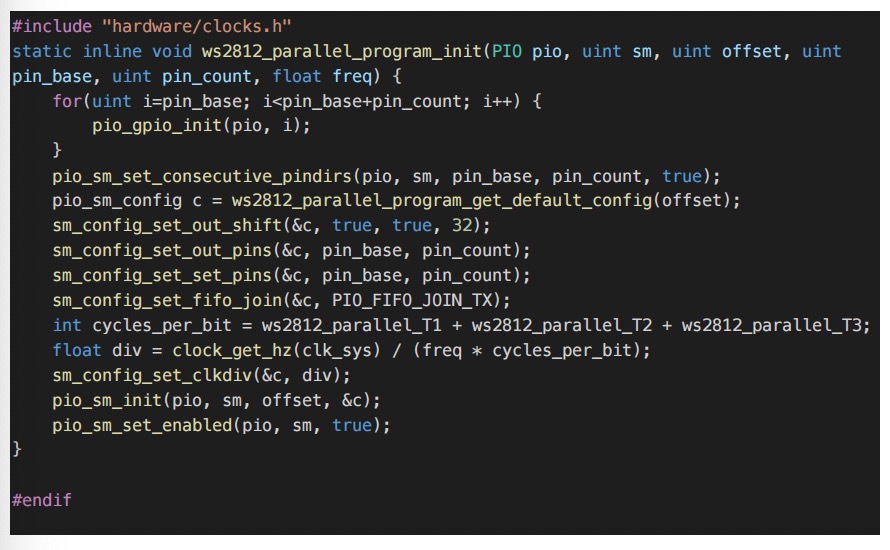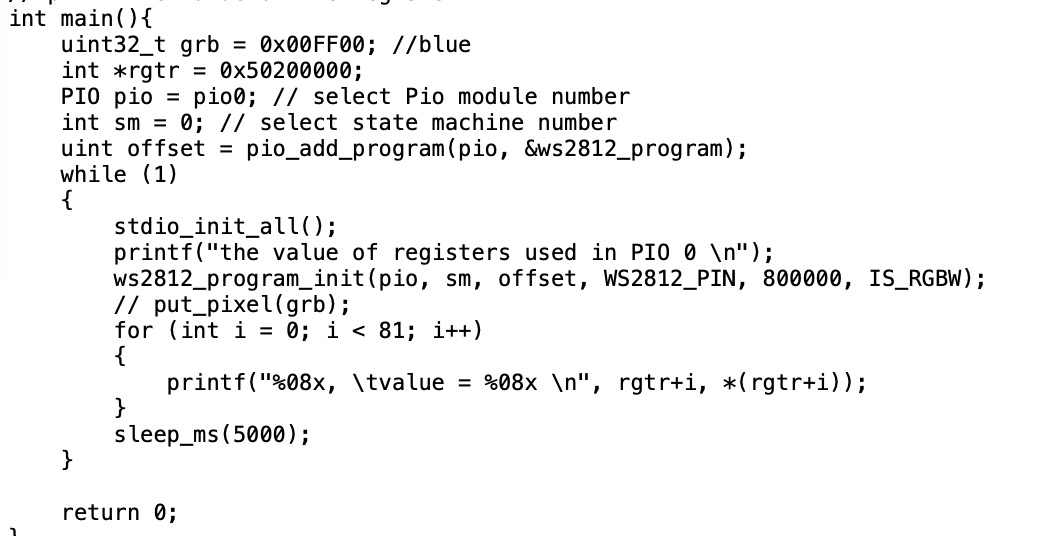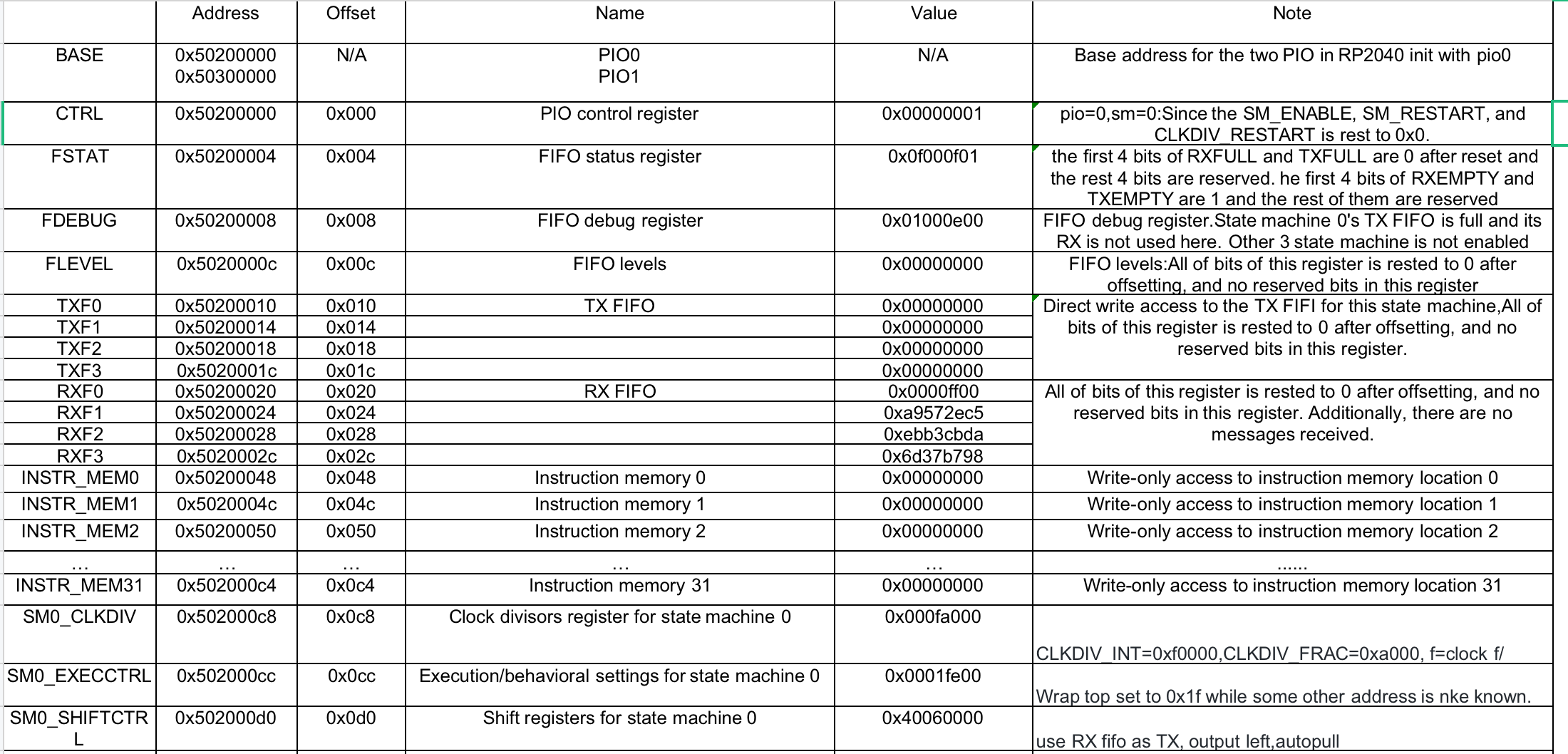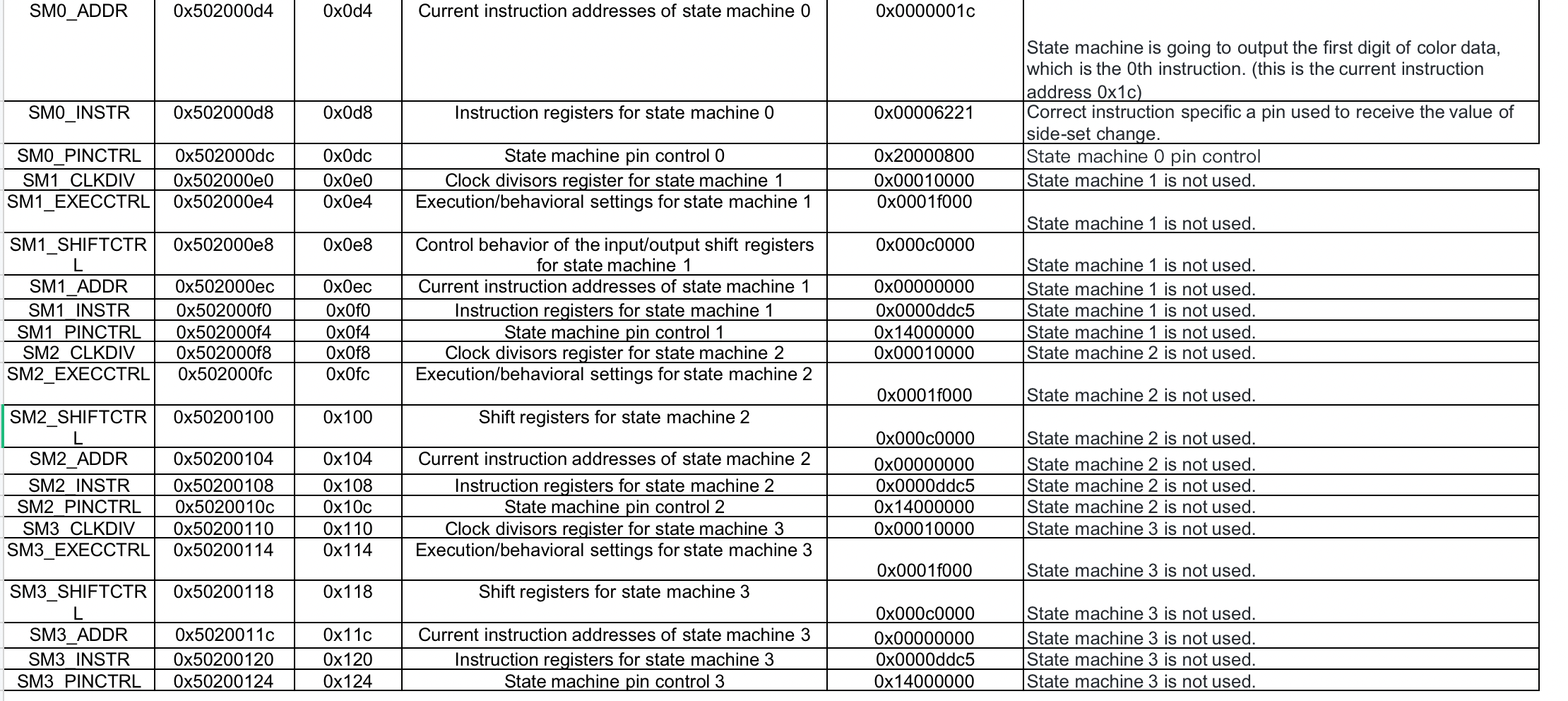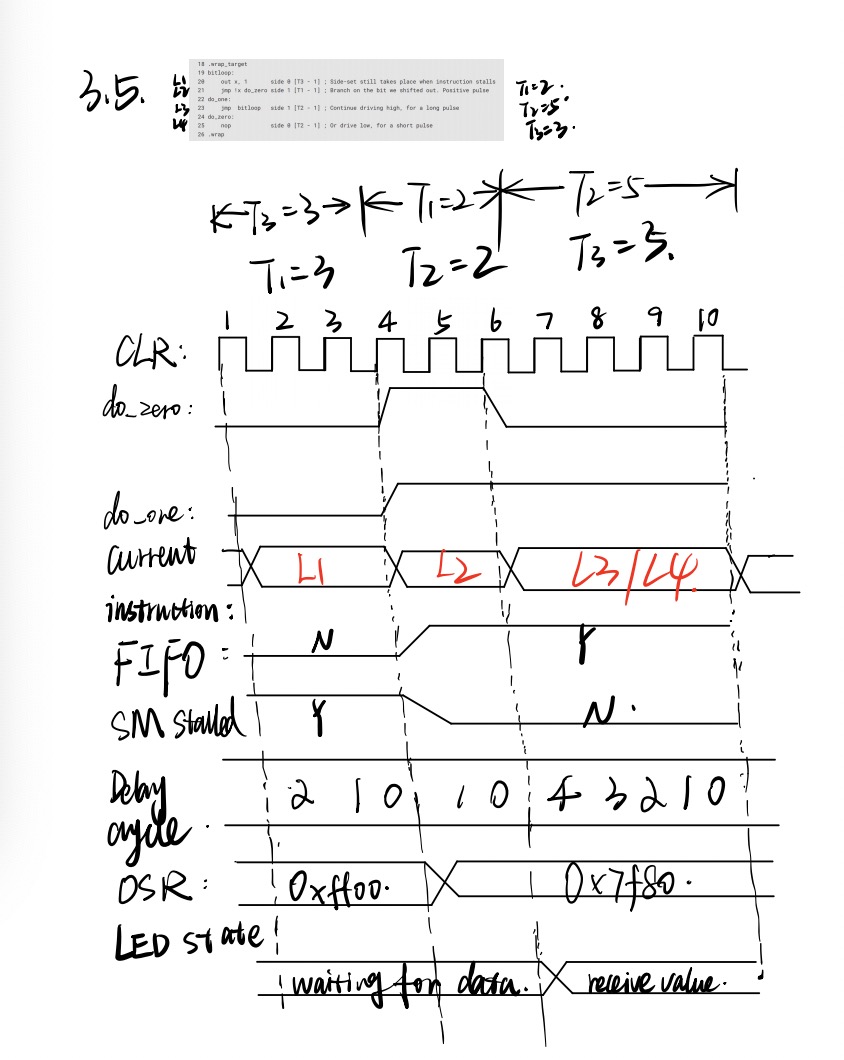University of Pennsylvania, ESE 5190: Intro to Embedded Systems, Lab 2A
(TODO) Ying Xu
(TODO) [email protected]
Tested on: (TODO) MacBook Air(M1), macOS Big Sur version 11.6
(TODO: Your README)
Include lab questions, screenshots, analysis, etc. (Remember, this is public, so don't put anything here you don't want to share with the world.)
PART 3: TALKING LEDS
3.2
• Why is bit-banging impractical on your laptop, despite it having a much faster processor than the RP2040?
Above certain speeds — say a factor of 1000 below the processor clock speed — IRQs become impractical, in part due to the timing uncertainty of actually entering an interrupt handler.
• What are some cases where directly using the GPIO might be a better choice than using the PIO hardware?
Whilst dealing with something like an LED string is possible using "bit-banging", once your hardware protocol gets faster to the point that it is of similar order of magnitude to your system clock speed, there is really not much you can hope to do. The main case where software GPIO access is the best choice is LEDs and push buttons.
• How do you get data into a PIO state machine?
Put data into the FIFO_TXn register of the PIO state machine.
• How do you get data out of a PIO state machine?
The OSR is a staging area for data entering the state machine through the TX FIFO. Data is pulled fromthe TX FIFO into the OSR one 32-bit chunk at a time.
• How do you program a PIO state machine?
Running pioasm on the .pio file and ask it to spit out SDK code and configuring the PIO SM when using the program.
• In the example, which low-level C SDK function is directly responsible for telling the PIO to set the LED to a new color? How is this function accessed from the main “application” code?
pio_sm_put_blocking(pio,sm,data)
• What role does the pioasm “assembler” play in the example, and how does this interact with CMake?
we can use it to build your PIO programs, for you to #include from your C or C++ program. pioasm can also be used directly, and has a few features not used by the C++ SDK, such as generating programs suitable for use with the MicroPython PIO library. And CMake function pico_generate_pio_header(TARGET PIO_FILE) takes care of invoking pioasm and adding the generated header to the include path of the target TARGET.
3.3 FOLLOW THE FLOW
ws2812.c
ws2812.pio.h
3.4 COLOR BY NUMBER
3.5 MODELING TIME
o What basic circuitry does a WS2812 LED need to operate? shift
o How do you connect a WS2812 to a microcontroller?
A serial data input to WS2812:
WS2812: DIN port receives data from the controller,RP2040: GPIO port 12 sends data to WS2812
o How does a WS2812 translate bits to color values?
The width of the pulse
o How many bits does it take to send a single color value?
Three
o What happens if you send more bits than this in a packet?
Extra data will be retransmitted to the following WS2812
o How do you tell a WS2812 you’re done sending data?
the PIO is stalled
o How do you send data to more than one WS2812 in a chain?
each ws2812 will keep the first three bytes of data
3.6 ZOOMING IN & 3.7 ZOOMING IN
The link is https://github.com/real-YingXu/ese5190-2022-lab2-into-the-void-star/blob/main/3.6%263.7.xlsx
PART 4: HELLO, BLINKENLIGHT
The link is https://github.com/real-YingXu/ese5190-2022-lab2-into-the-void-star/tree/main/lab2part4
decisions: make a to do list and read the documents
Reflect on the tools:
weaknesses of working with paper:Spending too much time
strengths of of working with spreadsheets: very detailed
Need to draw in the pictures.
